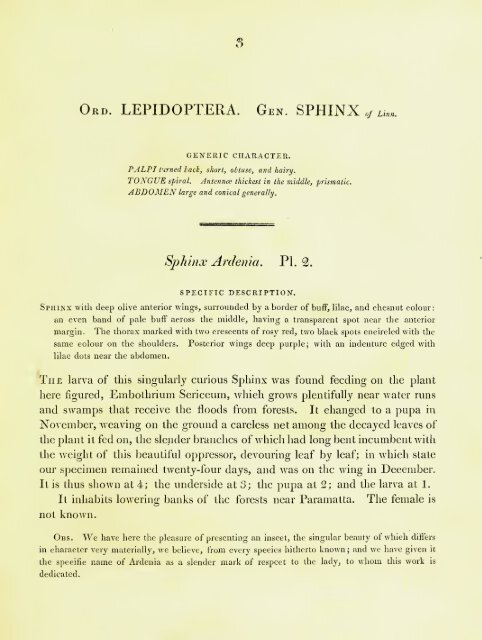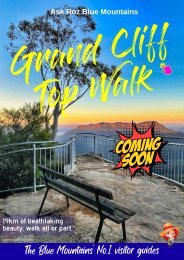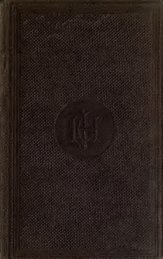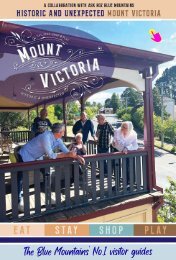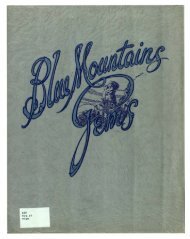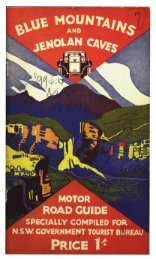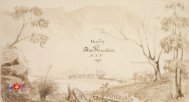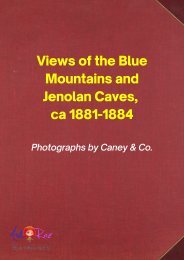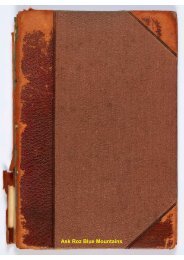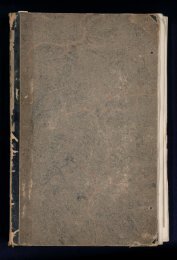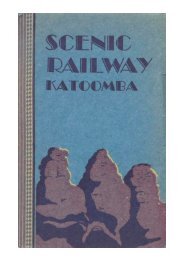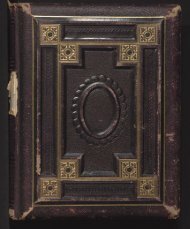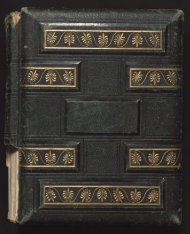A Natural History of Lepidopterous of NSW by John William Lewin
A Natural History of Lepidopterous of NSW by John William Lewin COLLECTED, ENGRAVED, AND FAITHFULLY PAINTED AFTER NATURE JOHN WILLIAM LEWIN, A.L.S. LATE OF PARAMATTA, NEW SOUTH WALES
A Natural History of Lepidopterous of NSW by John William Lewin
COLLECTED, ENGRAVED, AND FAITHFULLY PAINTED AFTER NATURE
JOHN WILLIAM LEWIN, A.L.S. LATE OF PARAMATTA, NEW SOUTH WALES
You also want an ePaper? Increase the reach of your titles
YUMPU automatically turns print PDFs into web optimized ePapers that Google loves.
Oed. LEPIDOPTERA. Gen. SPHINX 0j Li<br />
GENERIC CHARACTER.<br />
PALPI timed lack, short, obtuse, and hairy.<br />
TONGUE spiral. Antennce thickest in the middle, prismatic.<br />
ABDOMEN large and conical generally.<br />
Sphinx Ardenia. PL 2.<br />
SPECIFIC DESCRIPTION.<br />
Sphinx with deep olive anterior wings, surrounded <strong>by</strong> a border <strong>of</strong> buff, lilac, and chesnut colour:<br />
an even band <strong>of</strong> pale buff across the middle, having a transparent spot near tbe anterior<br />
margin. The thorax marked with two crescents <strong>of</strong> rosy red, two black spots encircled with the<br />
same colour on the shoulders. Posterior wings deep purple; with an indenture edged with<br />
lilac dots near the abdomen.<br />
The larva <strong>of</strong> this<br />
here figured,<br />
singularly curious Sphinx was found feeding on the plant<br />
Emb<strong>of</strong>hrium Sericeum, which grows plentifully near water runs<br />
and swamps that receive the floods from forests. It changed to a pupa in<br />
November, weaving on the ground a careless net among the decayed leaves <strong>of</strong><br />
the plant it fed on, the slender branches <strong>of</strong> which had long bent incumbent with<br />
the weight <strong>of</strong> this beautiful oppressor, devouring leaf <strong>by</strong> leaf;<br />
our specimen remained twenty-four days,<br />
in which state<br />
and Avas on the wing in December.<br />
It is thus shown at 4; the underside at 3; the pupa at 2; and the larva at 1.<br />
It inhabits lowering banks <strong>of</strong> the forests near Paramatta. The female is<br />
not known.<br />
Obs.<br />
We have here the pleasure <strong>of</strong> presenting an insect, the singular beauty <strong>of</strong> which differs<br />
in character very materially, we believe, from every species hitherto known; and we have given it<br />
the specific name <strong>of</strong> Ardenia as a slender mark <strong>of</strong> respect to the lady, to whom this work is<br />
dedicated.


